
Light is the window through which astronomers view the cosmos. It fills the Universe. Once light has been emitted, it travels on and on, moving constantly at the speed of light. It only stops when it hits something, be it a gas particle, a planet or even a black hole.
Because of light's eternal nature, we see distant galaxies not as they are now, but as they were when their light was emitted. If it has taken the light from an object a billion years to reach us from a galaxy, then we see that object as it was a billion years ago. Look far enough away, and you could view all the way back to when the first stars began to shine.
Look back even further and it's possible to see light from the very earliest days of our Universe's existence, which we see now as the cosmic microwave background (CMB).
"The simple way to explain the CMB is as the very first light ever emitted in our Universe," says Erminia Calabrese from Cardiff University. "It's been travelling from that moment all the way to today."
In the beginning...
The Big Bang theory states that in the very first moment of the Universe, all the energy and matter of the cosmos was at an infinitely dense point. In the initial fractions of a second of existence, this rapidly expanded, cooling as it went. When the Universe was a second old, it was cool enough for that energy to take on the form of matter particles - such as protons, neutrons and electrons. It also formed light particles known as photons, setting the entire Universe aglow long before the first stars began to shine.
この記事は BBC Sky at Night Magazine の December 2023 版に掲載されています。
7 日間の Magzter GOLD 無料トライアルを開始して、何千もの厳選されたプレミアム ストーリー、9,000 以上の雑誌や新聞にアクセスしてください。
すでに購読者です ? サインイン
この記事は BBC Sky at Night Magazine の December 2023 版に掲載されています。
7 日間の Magzter GOLD 無料トライアルを開始して、何千もの厳選されたプレミアム ストーリー、9,000 以上の雑誌や新聞にアクセスしてください。
すでに購読者です? サインイン
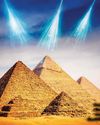
Putting cosmic rays to work
These penetrating interstellar particles have applications from astronomy to archaeology
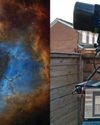
Set up your first imaging sequence
How to automate and coordinate your gear over multiple nights of imaging

The Universe without gravity
Life with no gravity might sound a fun idea, but as Govert Schilling explains, shutting off this pivotalforce would spell disaster for Earth and beyond
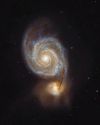
How to blend images taken with different camera setups
Combine data captured at varied focal lengths to create rich, deep images

INSIDE THE SKY AT NIGHT
Back in September 2021, The Sky at Night show spoke to Carly Howett about NASA's then upcoming Lucy mission. As the spacecraft now approaches its main targets - the Trojan asteroids - we check in with her to see how the mission is going

The science of SCI-FI
We love a good sci-fi film, but do they get the science right? Amy Arthur picks six of the big mistakes made in space films

Seeing in a new light
It's National Astronomy Week this month, so take a tip from Mark Westmoquette and let mindful stargazing change your perspective on your life and problems
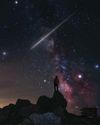
What to do if you find a meteorite
Ever come across an unusual rock and wondered if it's a meteorite? Mark McIntyre explains how to tell if that stone really is a fragment from outer space
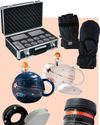
GEAR
Charlotte Daniels rounds up the latest astronomical accessories

Q&A WITH A STELLAR ECLIPSE SPECIALIST
Many stars are gravitationally locked inside multi-star systems, but a rare new triple-star system has set a new record for how cosy these clusters can get